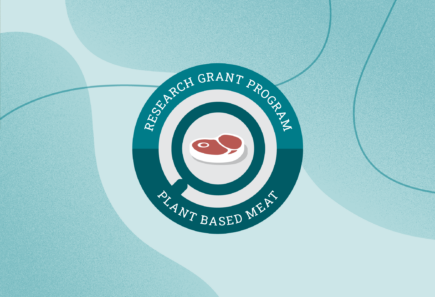
Cost-effective meat-like protein production
Years active: 2024New protein extraction processes will be developed for yeast-based meat proteins to reduce costs and negative environmental impact.

New protein extraction processes will be developed for yeast-based meat proteins to reduce costs and negative environmental impact.

A biotech solution is designed and evaluated to eliminate the need for expensive equipment and large amounts of energy in protein purification.
Creating a catalog of molecules responsible for the characteristic flavor of a species will enable alternative protein product manufacturers to create products that more accurately replicate the sensory experience of animal meats, removing a major barrier to their widespread adoption.
There has been little publicly announced R&D and commercial effort to develop cultivated, fermentation-derived, or hybrid surimi. Compared to other meat products, surimi is likely to be by far one of the easiest to replicate well.

Dr Frank and his team are working to create more desirable plant-based seafood flavors. They will apply natural flavor chemistry pathways knowledge and sensory techniques to identify the most suitable flavor precursors for a range of plant-based seafood products.

The project aims to develop a sustainable toolbox of edible fungi strains to obtain intact RuBisCO from green tea. It bridges fungi fermentation with leaf protein production from waste streams, generating two promising alternative proteins in a single system.
Because alternative meat's fat content and fatty acid profile can be more easily controlled than conventional meat's, there is an opportunity to alter fat content for nutritional benefits. Additional research is needed to understand the sensory consequences of such manipulations, potentially allowing alternative meat producers to produce "nutritionally enhanced" products without compromising on sensory quality.
The identification of non-animal, non-recombinant proteins with similar functionality to serum albumin and transferrin will lead to major cost reductions in cell culture media development, facilitating progress toward achieving price parity with cultivated meat.
In order to appeal to health-conscious consumers, alternative seafood products should contain similar omega-3 fatty acids, especially DHA and EPA, content to conventional seafood. Animal-free omega-3 ingredients can be expensive and supply can be inconsistent. Scaling up animal-free omega-3 production is critical to the success of the global alternative seafood market, which is seeing increased attention and promising growth. Adding omega-3 to other alternative protein products could also provide a great point of differentiation while improving health appeal.
As the alternative seafood industry scales up, a low-cost and abundant source of long-chain omega-3 polyunsaturated fatty acids will become necessary. Several means of producing these compounds have been investigated and commercialized, but additional innovation is needed to build a robust and scalable supply chain. Methods that would benefit from additional research include precision fermentation and cell-free systems.